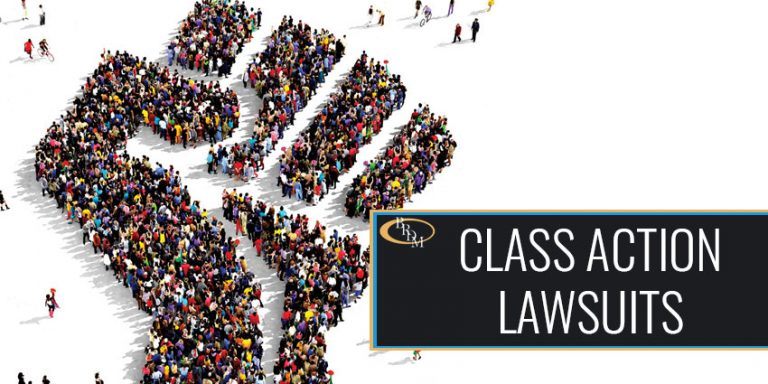Debunking Class Action Lawsuits: A Closer Check Out Lawful Proceedings
Class activity suits can be challenging and complicated, usually shrouded in a veil of secret for those unknown with the lawful procedures involved. Nevertheless, obtaining a deeper understanding of these suits is important, as they work as a powerful device for people to look for justice and hold firms liable. In this conversation, we will debunk class action lawsuits, taking a better take a look at the numerous elements of the legal proceedings. From recognizing the standards for class action qualification to the duty of class representatives, and from the process of class certification to the resolution of these claims, we will decipher the details and lost light on the inner operations of this legal system. Allow's dive into the globe of class activity lawsuits and uncover the details that exist underneath the surface.
Comprehending Class Action Lawsuits
Recognizing Course Activity Legal action requires a thorough assessment of the legal process involved in cumulative lawsuits. Class action claims are a type of lawsuit where a team of individuals with comparable insurance claims or complaints collaborate to launch a legal action against an usual offender. This form of lawsuits enables individuals with limited resources to collectively seek justice, as it incorporates the strength of multiple specific claims into a solitary lawful action.
The process begins with the identification of a lead plaintiff or course rep that files the initial problem in support of the entire class. The court after that identifies whether the instance fulfills the demands for class accreditation, that include commonality, numerosity, typicality, and adequacy of depiction. If licensed, the court alerts potential course members, providing a possibility to opt-out if they want to seek their cases individually.
As soon as the course is accredited, the lawsuits proceeds via various stages, including discovery, movement method, and, if required, test. The end result of the legal action can result in a judgment or a settlement, which is binding on all course members unless they pick to opt-out. Course activity claims can encompass a vast array of legal issues, such as customer security, safety and securities scams, employment discrimination, and ecological damage.
Recognizing the nuances of class activity legal actions is important for both complainants and defendants involved in cumulative litigation. It calls for a comprehensive understanding of the lawful requirements for certification, the civil liberties and commitments of class participants, and the possible benefits and dangers related to going after or protecting versus class activity insurance claims.
Identifying Course Activity Eligibility
To establish whether a lawsuit certifies as a class action lawsuit, details requirements must be fulfilled. These criteria are created to make certain that the instance can appropriately stand for the rate of interests of a big group of individuals that have suffered similar damage or have actually been affected by the exact same problem. The vital variable in identifying course activity eligibility is the existence of an usual question or concern that influences all possible course members.
First of all, a course action suit calls for numerosity, which suggests there must be a substantial variety of potential class members involved. This guarantees that a course activity is a reliable method to settle the claims of a big team of people, as opposed to having each person file an individual legal action.
Secondly, there have to be commonness amongst the insurance claims of the potential course members. This suggests that there must be a common concern of legislation or fact that is central to the situation. If each possible class member's case is special and unassociated to the others, a course activity may not be suitable.

The Duty of Course Representatives
Class representatives play an important function in class action lawsuits by standing for the rate of interests of the entire course. These individuals are picked from within the course to function as the public face of the lawsuit and are accountable for choosing on behalf of all course participants. The duty of course agents involves different obligations and duties throughout the lawful process.
One of the main duties of course representatives is to provide details try these out and help to their fellow course members. They act as a factor of contact and communication in between the course members and the attorneys representing them. This consists of maintaining the class members notified about crucial updates, addressing their concerns, and addressing any type of worries they might have.
Class representatives also have the duty to proactively get involved in the lawsuits process web link (BioVie class action lawsuit). This involves functioning carefully with the attorneys to develop lawful methods, gathering proof, and supplying testimony if necessary. They have to be actively associated with all facets of the situation to guarantee that the most effective passions of the entire class are stood for
In addition, class representatives are liable for authorizing settlements or various other resolutions reached in the legal action. They should thoroughly review the regards to the settlement and decide that is in the most effective rate of interest of the entire class. This decision-making procedure needs mindful consideration and appointment with the course participants.
The Process of Course Accreditation
The procedure of certifying a course in a class activity lawsuit involves a detailed examination of specific requirements to determine if the situation fulfills the needed needs for course qualification. Class accreditation is an essential action in the lawsuits process as it establishes whether a lawsuit can continue as a class activity, allowing a huge team of people with similar insurance claims to be represented collectively by one or a few people.
To acquire class accreditation, the plaintiff should demonstrate that the suggested course satisfies specific prerequisites. Typicality calls for that the cases or defenses of the class representatives are typical of those of the course. Competence of depiction makes certain that the class reps will rather and appropriately shield the interests of the class.
If the proposed class satisfies the essential demands,The court will certainly inspect these standards and the complainant's evidence to establish. The court might likewise think about other variables, such as whether a course activity is the premium approach to solve the conflict and whether the course is adequately cohesive.

As soon as the court gives class certification, the legal action can continue as a class action, permitting the complainants to collectively look for alleviation and potentially obtain a judgment or negotiation that benefits the entire course.
Managing Course Action Lawsuits
As soon as course certification has actually been approved, the next step in resolving a course action lawsuit is to browse the process of lawsuits or settlement negotiations. Lawsuits describes the legal process in court, where the plaintiff's attorney offers evidence and debates to sustain their insurance claims, and read the article the defendant's lawyer counters with their very own evidence and debates. This process can entail different phases, such as pretrial movements, discovery, and test. During pretrial motions, both celebrations may file activities to reject the case or slim down the problems in opinion. Discovery allows each side to collect proof and information from the various other party via techniques such as file interrogatories, depositions, and requests. If the case proceeds to test, both events provide their case before a court or court, who will then determine the outcome.
On the other hand, negotiation arrangements entail discussions between the celebrations to get to a mutually acceptable resolution without going to test. Settlement uses might be made at any kind of stage of the lawsuits process, and if both celebrations concur, a negotiation agreement is reached.
Final Thought
To conclude, class activity claims play a critical function in providing justice and compensation to huge teams of individuals who have actually been hurt by the same entity. By licensing a class and appointing class reps, the legal procedure becomes extra obtainable and effective for the complainants. Solving these lawsuits can be a complicated and lengthy process, yet it is necessary in holding corporations liable for their activities and guaranteeing reasonable outcomes for all impacted events.
From comprehending the standards for class activity qualification to the role of class reps, and from the process of class qualification to the resolution of these lawsuits, we will unwind the intricacies and dropped light on the internal operations of this legal system. The crucial variable in identifying class activity qualification is the presence of a typical concern or concern that affects all potential class participants.
If each possible course member's insurance claim is unrelated and distinct to the others, a class action might not be proper.
Course reps play a crucial function in class action claims by standing for the passions of the whole course.Once class accreditation has been provided, the following step in dealing with a class action suit is to navigate the procedure of litigation or settlement arrangements.